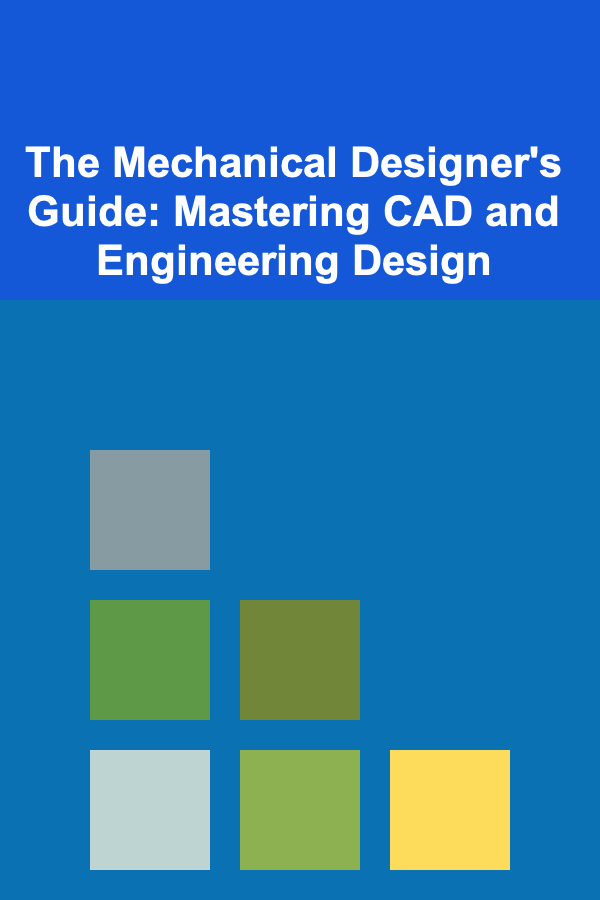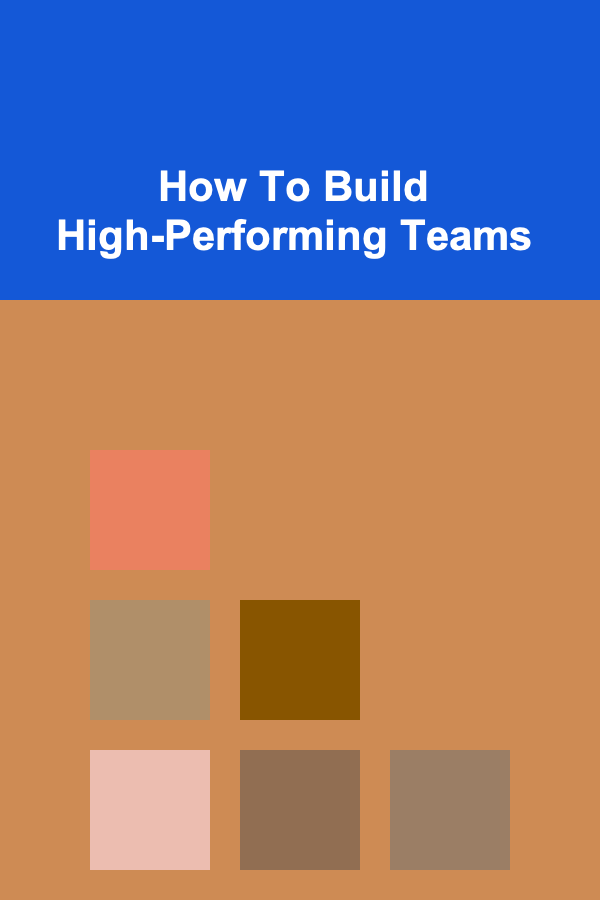
The Mechanical Designer's Guide: Mastering CAD and Engineering Design
ebook include PDF & Audio bundle (Micro Guide)
$12.99$7.99
Limited Time Offer! Order within the next:

Mechanical design is a vast field that blends engineering principles with creativity to create tangible, functional products. From automotive parts and industrial machines to cutting-edge consumer devices, mechanical designers play a critical role in shaping the physical world. With the advent of powerful software tools and technologies, the way mechanical designs are created and optimized has drastically changed over the years. The mechanical designer's toolkit is now filled with sophisticated Computer-Aided Design (CAD) software, simulation tools, and manufacturing techniques.
This guide will take you through actionable steps to master CAD, engineering design, and best practices to become a successful mechanical designer.
Understanding the Role of a Mechanical Designer
A mechanical designer is tasked with creating mechanical systems, components, or products by applying engineering principles and leveraging design tools. These designs must not only meet functional requirements but also be manufacturable, cost-effective, and efficient. The role of a mechanical designer typically involves:
- Translating product requirements into detailed designs
- Creating 2D and 3D models using CAD software
- Collaborating with engineers, manufacturers, and stakeholders
- Testing and iterating designs through prototyping and analysis
- Ensuring compliance with standards and regulations
Mechanical designers work across various industries, from aerospace to automotive, industrial machinery to consumer electronics, each with unique challenges and requirements.
Mastering CAD Software: A Key Skill for Mechanical Designers
Computer-Aided Design (CAD) is the cornerstone of modern mechanical design. With CAD, designers can create precise digital models of parts and assemblies, simulate their behavior, and generate technical drawings for manufacturing. Mastery of CAD software is critical for mechanical designers, as it forms the basis of all their design work.
Choosing the Right CAD Software
There are many CAD tools available in the market, each catering to different needs, skill levels, and industries. Some of the most widely used CAD tools include:
- SolidWorks: Known for its ease of use and powerful parametric modeling tools, SolidWorks is ideal for product design and mechanical engineering applications. It's particularly suited for parts and assemblies.
- Autodesk Inventor: A robust tool that specializes in parametric design, sheet metal design, and assembly modeling. It's often used in manufacturing settings where precision is key.
- CATIA: Developed by Dassault Systems, CATIA is particularly strong in aerospace and automotive design. It's known for its advanced surface modeling capabilities, making it ideal for complex designs.
- Siemens NX: A high-end CAD tool used by large companies in industries such as aerospace, automotive, and industrial machinery. It integrates product lifecycle management (PLM) and manufacturing processes.
- Fusion 360: A cloud-based CAD tool that offers an integrated solution for design, engineering, and manufacturing. It's excellent for collaborative design and accessible for both professionals and hobbyists.
As a mechanical designer, choosing the right CAD software depends on your specific needs, the complexity of the projects you handle, and your team's software requirements. While learning any CAD software may take time, gaining proficiency in one tool is often sufficient for most industries.
Mastering 3D Modeling
At the heart of CAD is 3D modeling, where mechanical designers create digital representations of parts and assemblies. Some best practices to master 3D modeling include:
- Start Simple: Begin with basic shapes like cubes, cylinders, and spheres, then gradually move on to more complex geometries. Avoid unnecessary complexity at first---focus on getting the core dimensions and features correct.
- Use Parametric Design: Parametric design allows you to define relationships between parts and their dimensions. For example, you can set a hole to always be a fixed distance from an edge, or the length of a part to always be proportional to its width. This adds flexibility to your design and makes future changes easier.
- Assembly Modeling: Learn to create assemblies by combining individual parts. In assembly mode, you can define how parts interact with each other (e.g., using mates or joints) to simulate real-world movement and assembly conditions.
- Design for Manufacturability (DFM): While designing, always keep the manufacturing process in mind. Choose features and geometries that can be easily and cost-effectively manufactured. Consider constraints like tolerances, material types, and assembly processes early in the design stage.
Simulation and Analysis
Modern CAD software provides powerful tools for simulating the behavior of your designs under real-world conditions. Simulations can identify potential issues before physical prototypes are created, saving both time and resources. Some essential simulations for mechanical designers include:
- Finite Element Analysis (FEA): FEA helps to predict how a part will react to stress, vibration, and other forces. It breaks down the design into small elements, making it possible to simulate how each element behaves under load.
- Computational Fluid Dynamics (CFD): For designs involving fluid flow, such as pumps, fans, or heat exchangers, CFD helps to analyze how fluids (liquids and gases) interact with the surfaces of your design. It's crucial for understanding aerodynamics, heat transfer, and more.
- Kinematics: If your design involves moving parts (such as gears or linkages), kinematic simulations help you analyze their motion, checking for interferences or collisions in the assembly.
Creating Technical Drawings
While 3D models are the core of modern design, technical drawings are still essential for communicating how a part or assembly should be manufactured. CAD software makes it easy to generate precise technical drawings, which should include:
- Dimensions: Ensure that all necessary dimensions are clearly labeled.
- Tolerances: Specify tolerances to define how much variation is acceptable in part dimensions.
- Bill of Materials (BOM): List all materials used in the design, along with part numbers and quantities.
- Assembly Instructions: Provide step-by-step instructions for assembling components, if applicable.
Collaboration and Version Control
Designing complex products often requires collaboration with other engineers, stakeholders, or clients. CAD tools enable collaborative design by allowing multiple users to work on the same project. Some key collaboration practices include:
- Cloud-Based Tools: Many modern CAD tools (such as Fusion 360) offer cloud-based collaboration, allowing team members to access and modify designs in real-time from different locations.
- Version Control: Track design revisions to ensure that you're always working with the latest version. Proper version control prevents mistakes caused by outdated or conflicting files.
- Feedback Loops: Regularly share your designs with teammates or clients to gather feedback. Collaboration can often lead to valuable insights that improve the design.
Applying Engineering Principles to Mechanical Design
While CAD software is an essential tool, mastering engineering principles is just as important in ensuring that your designs are both functional and manufacturable. Below are some critical engineering principles that every mechanical designer should know:
Material Selection
The choice of materials can make or break a design. Each material has specific mechanical properties such as strength, ductility, thermal conductivity, and resistance to corrosion. Choosing the right material for your design depends on factors like:
- Load-bearing capacity: Will the part be subjected to tensile, shear, or torsional forces? Choose materials that can withstand these stresses.
- Temperature conditions: Some materials perform better at high or low temperatures. Consider the operating environment for your design.
- Manufacturing processes: Certain materials are easier to work with in specific manufacturing processes (e.g., machining, casting, or injection molding).
Design for Manufacturability (DFM)
As mentioned earlier, DFM is crucial for ensuring that your design is not only functional but also manufacturable. Some tips for DFM include:
- Minimize Part Count: Fewer parts reduce assembly time and complexity. Look for ways to consolidate parts.
- Avoid Complex Geometries: Complex shapes may be difficult or expensive to manufacture. Stick to geometries that are easy to machine or fabricate.
- Consider Tolerances: Tight tolerances may increase production costs. Only specify the tolerances necessary for the function of the part.
Tolerances and Fit
Understanding the concepts of tolerances and fits is critical to ensuring parts fit together correctly in an assembly. The basic types of fits are:
- Clearance Fit: Where there is a small gap between parts, allowing them to move freely.
- Interference Fit: Where parts are designed to fit together tightly, often requiring force to assemble.
- Transition Fit: A combination of both clearance and interference, depending on the parts.
You should define clear tolerances for your designs to ensure that parts can be assembled and function properly, without excessive play or friction.
Continuous Improvement and Learning
To stay competitive as a mechanical designer, continuous learning is essential. Technologies, tools, and best practices in mechanical design are constantly evolving. Here's how to keep growing:
- Attend Training and Workshops: CAD software providers often offer training courses, webinars, and workshops to help you stay updated with new features and techniques.
- Follow Industry Trends: Subscribe to engineering journals, blogs, and newsletters to keep up with the latest developments in mechanical design and engineering.
- Seek Feedback: Regularly seek feedback from peers, mentors, and clients to improve your designs. Constructive criticism can help you refine your approach and enhance your skills.
- Experiment and Innovate: Don't be afraid to try new things, whether it's experimenting with new software features or exploring emerging technologies like 3D printing and additive manufacturing. Innovation is a key part of being a great designer.
Conclusion
Mastering CAD and engineering design requires a blend of technical knowledge, creativity, and practical experience. By developing proficiency in CAD tools, applying sound engineering principles, and continually learning, you can design products that are functional, manufacturable, and innovative. Keep refining your skills, collaborating with others, and embracing new technologies to stay ahead in this dynamic and exciting field.

How To Build High-Performing Teams
Read More
How to Create a Cleaning Schedule that the Whole Family Follows
Read More
How to Create an Online Course for Aspiring Video Producers
Read More
How to Demonstrate Your Project's Impact in a Grant Proposal
Read More
How to Secure Your Rental Property from Break-ins and Theft
Read More
How to Set Up a Checklist for Backing Up Website Data Before Migration
Read MoreOther Products

How To Build High-Performing Teams
Read More
How to Create a Cleaning Schedule that the Whole Family Follows
Read More
How to Create an Online Course for Aspiring Video Producers
Read More
How to Demonstrate Your Project's Impact in a Grant Proposal
Read More
How to Secure Your Rental Property from Break-ins and Theft
Read More